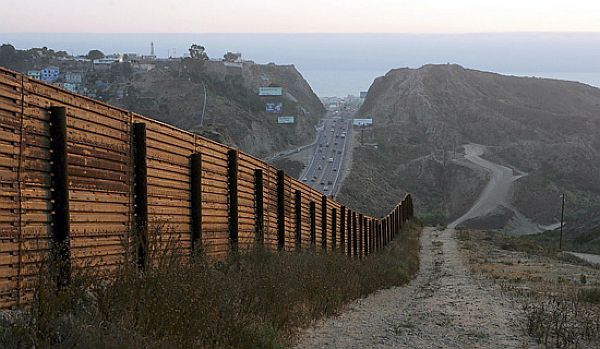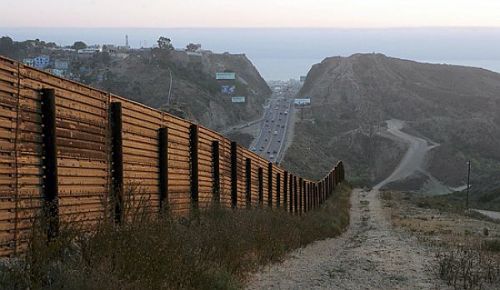BY ANYA MALKOV
In May 2012, eleven students of the John F. Kennedy School of Government at Harvard University visited El Paso, Texas, and Ciudad Juárez, Mexico, as part of a Leadership Service Seminar program sponsored by the Center for Public Leadership at the Harvard Kennedy School and the offices of the Academic Dean and the Dean of Students.
From the top of scenic drive it was nearly impossible to tell where El Paso ended and Juárez began. They seemed just one city surrounded by arid plateaus. I had to look for landmarks to identify the U.S.-Mexican border that runs across this city—the barely perceptible Rio Grande in its concrete channel, the border highway, and a few bridges that are the international points of entry. With a population of nearly three million, El Paso, Texas, and Ciudad Juárez, Mexico, together make up the largest binational metropolitan area in the Western hemisphere.
Geographic unity of the border-straddling metropolis notwithstanding, El Paso is the safest city of its size in the United States, while Juárez is among the most dangerous in the world. It was not easy to convince Harvard University administrators to let us go into Juárez, despite the fact that the distance between the two downtowns is about the same as from Harvard to MIT. But we were eleven graduate students who came to the region determined to examine and experience the issues. Without crossing the border physically as well as mentally, we would be left staring through the fence, guessing about the people on the other side and projecting our preconceived notions on them—not unlike the current political debate on immigration reform.
Our first physical encounter with the border was in the desert outside the city. On the vast, windblown landscape, we could see the divide stretching past shrubs and patrol vehicles all the way to the horizon. It was a tall, discolored, chain-link fence topped with barbed wire. Beyond the fence, on the Mexican side, was a small trailer park. Kids spotted us and ran up to the partition. We doled out candy through the chain links, steeling our hearts when they asked for dollars instead. We watched the youngest kid smudge red candy goo all over his face and asked the older ones what they wanted to be when they grew up. The girls shrugged shyly, the boys said doctor, policeman and, inexplicably, border patrol agent.
That night at our group reflection, we were painfully aware that unlike those kids, we were on the privileged side of the fence. Prior to this encounter, I dismissed the argument that borders are unjust. But now that I had encountered it up close, the border seemed arbitrary, even silly. We were breathing the same air, standing on the same desert sand. Why was there a line in that sand that cut them off from the opportunities afforded to us?
Our second tour of the border was with Customs and Border Protection (CBP) officers. They took us to the “wall”—a section of the fence built since the increased focus on security of the George W. Bush years. Here it was a heavy mesh of fused metal rods and concrete-reinforced beams. The physical barrier is eighteen feet high and seven feet deep, but the virtual border spreads inland; the desert is covered by cameras, motion detectors, and, of course, patrols. 2,700 agents cover the 268 border miles of the El Paso sector.
Despite the border’s many layers, the officers said people can always outsmart a barrier when sufficiently motivated by profit or desperation. Agents have found tunnels under the fence and intercepted unpiloted planes sent over it to smuggle drugs. They have also rescued dehydrated migrants who tried to get through the most remote, most brutal parts of the desert where the fence is less secure.
The CBP officers we met had the demeanor of neighborhood cops: regular guys, friendly but serious about their law enforcement mission. One of the trip participants, the son of Mexican immigrants and an immigrant rights advocate, told me later that he expected them to be evil, or at least corrupt, but now he believes that they were doing their job and doing it well. He said he grew up with stories of la migra (immigration authorities) picking up relatives, but found the guys we met hard to hate. He concluded that at least these two would not shoot an unarmed migrant or shoot holes in water canisters left by human rights organizations for weary border crossers.
Like my questioning of the border’s legitimacy, his questioning of previously unchallenged perceptions was significant. Each of us had crossed a mental border to understand the opposing perspective. Then it came time to cross the physical border. My stomach churned with anxiety. As we drove across the Bridge of the Americas from El Paso into Ciudad Juárez, I thought back to how intertwined the cities appeared from the mountaintop. On the ground, however, the contrast was stark. Shiny high-rises gave way to graffiti walls, colorful food carts, and occasional trucks full of machine-gun wielding federales—the Mexican federal police.
We turned off the main road onto a dusty, unpaved neighborhood street. After some bumpy turns, we arrived at the Centro de Derechos Humanos Paso del Norte—a prominent human rights and victim advocacy organization in Juárez.
As we settled in for a lunch discussion, the organization’s leader, Father Oscar Enriquez, asked the group: “Now tell me, why? Why do you people in America have such an insatiable appetite for drugs? When you smoke marijuana, why do you not care about people in Mexico dying?” Our group’s silence hung heavy. This was his border: Americans using drugs on one side, Mexicans suffering from the drug trade on the other.
A discussion ensued, and differences of opinion emerged among both the Centro staff and our group. Who should take responsibility for the drug cartel violence in Juárez? There were no easy answers, but there were questions being asked honestly by everyone in an attempt to learn from each other. In a world of partisans, divides, and borders, this was a rare and significant event.
I was chatting, in limping Spanish, with Erica, a volunteer, whose name I’ve changed to protect her identity. She was around my age, and soon our conversation moved from policy to things we do on a night out with friends. Seeing my surprise that the youth of Juárez could still go out, she told me about her favorite places to go for dancing or karaoke. Our group had strict orders to be back in the United States before dusk, yet life in Juárez went on, with weddings, quinceañeras, and parties, in spite of the violence.
On our way back, we crossed the Paso del Norte Bridge on foot, breezing by four lanes of standstill car traffic—the rush-hour commuters at the port of entry. The American citizen lane was quicker than all the others. Each one of us went through an airport-like security screening. Aside from these layers of security, only two miles of city blocks separated Erica and her friends from our group who returned to the safety of El Paso.
Across the same bridges that we used that day, billions of dollars in goods cross the border on trucks and trains. Mixed into the legitimate stream of commerce, the drugs flow north, fueled by American demand. The guns, widely available in Texas, flow south. As more families become desperate to escape the ensuing violence and poverty, more of them try to get into the United States. It is clear that a taller fence would fix nothing.
Securing the border, popular with U.S. pundits in the current immigration debate, is not a policy proposal that could address cross-border injustice. It is a rhetorical claim detached from the daily realities we experienced as we met with advocates, government officials, and immigrants. The border-straddling continuity of El Paso and Juárez symbolizes the interdependence between the United States and Mexico. The border is permeable and immutable all at once. On one side are comfortable consumers living in safety. On the other, struggling producers living in spite of violence.
Policy makers must consider the root causes of Mexican immigration, including the American demand for drugs, the Mexican government’s failure to control cartel violence, and the role of trade policies in exacerbating poverty. Americans must not ignore their own complicity in the ills that plague Mexico, while Mexican leaders must not allow their government to be co-opted by drug money. Both countries share the responsibility to address these core issues for the sake of the people on both sides. Until that happens, no U.S. immigration reform effort will truly be comprehensive.
Photo source here.
Anya Malkov is a 2013 Master in Public Policy candidate at the John F. Kennedy School of Government at Harvard University, where she is a Gleitsman Fellow at the Center for Public Leadership. Previously, she worked as a government relations associate at the Pew Charitable Trusts in Washington, DC.

